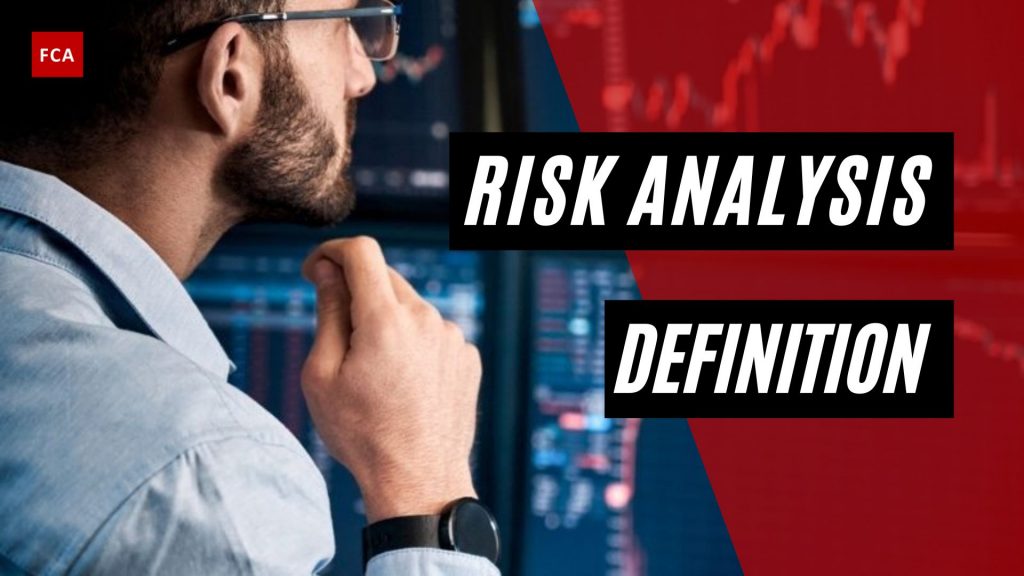Risk analysis definition. Risk assessment in Markets Compliance, is the assessment focused on important Markets Compliance risks that could harm the financial objectives of investors, orderly markets, and harm the overall financial stability. The board of directors of a company has the ultimate responsibility and accountability for the level of Markets Compliance risk accepted or undertaken.

Risk Analysis Definition
The Board should approve the overall business strategies and risk management and control policies of the company, and perform independent evaluations (through the internal audit function) to ensure Markets Compliance and continuing suitability of established strategies and policies.
Companies that have adopted systems of matrix management should have clearly defined lines of reporting at all levels. The Markets Compliance risk assessment process covers the main categories of risks, such as market risk, liquidity risk, and operational risk.
Market Risk
Market risk is a risk inherent in any investment or trading. It is the risk that the investment will not be as profitable as the investor expected due to fluctuation in the share or security market. In market risk, the risk that prices or rates will adversely change due to economic forces remains. Market risk can also include the risks associated with the cost of borrowing securities, dividend risk, and correlation risk. An example of the danger of market risk is highlighted in the bankruptcy of Orange County.
Orange County’s Treasurer utilized the Investment Pool’s assets to invest in significant derivatives, which were “structured notes” and “inverse floaters”. After the interest rates rose, the rates and value of derivatives declined, which caused a $1.7 billion loss to the Investment Pool of Orange Country.
Liquidity Risk
Liquidity risk is the risk that a party to a securities instrument may not be able to sell or transfer that instrument quickly and at a reasonable price, and as a result, incur a loss. Liquidity risk includes the risk that a firm will not be able to unwind or hedge a position.
Operational Risk
Operational risk is the risk of conducting improper trade or failure of management systems resulting in financial loss. Operational risk is the risk of loss that may arise due to the breakdown in internal controls and processes of the company such as unauthorized trading, fraud in trading or back-office functions including inadequate books and records and a lack of basic internal accounting controls, inexperienced personnel, and unstable and easily accessed computer systems.
Operational risk is controlled through proper management procedures including adequate books and records and basic internal accounting controls, a strong internal audit function that is independent of the trading and revenue side of the business, clear limits on personnel, and risk management and control policies. Had proper management oversight, as well as the fundamental risk management and control practice of separating backroom and trading functions, been in place, the losses at Barings and Daiwa could perhaps have been avoided, or at the very least, minimized.

Markets Compliance Regulators
Markets compliance regulators monitor and assess the regulatory developments, and the competencies of the company to comply with such developments. Regulators continuously strengthen their internal capabilities to identify and assess risks to the clients or investors, markets, and financial stability of the economy.
Examples of tools, and methodologies for risk assessment, and monitoring may include:
- The use of aggregated risk measurements;
- The use of reports that warrant management attention highlighting material deviations between occurrences and exceptions report or situations requiring resolution;
- Targeted securities trade surveillance, observation of procedures, investment reviews, interview of relevant investment staff;
The first step in setting a risk management and control strategy is a formal analysis of the firm’s business activities and the risks of these activities to the firm, ultimately in terms of the risk to capital. From this analysis, quantitative risk exposure limits for each major business activity or product and specifications of the scope of permitted activities should be developed and supported by adequate capital.
Once developed, ongoing reviews of the activities and risks of a firm should be conducted regularly and periodic reevaluation of strategies considered based on changes in business and markets. As discussed below, the results of internal and external audits should be reported directly to the governing body.
Understanding Risk Analysis
Risk assessment allows corporations, governments, and investors to assess the likelihood that an adverse event will have a negative impact on a business, economy, project, or investment. Risk assessment is critical for determining the worthiness of a specific project or investment and the best process(es) to mitigate those risks. Risk analysis provides various approaches for evaluating the risk-reward tradeoff of a potential investment opportunity.
A risk analyst begins by identifying what could go wrong. These disadvantages must be balanced against a probability metric that assesses the likelihood of the event occurring.
Finally, risk analysis attempts to estimate the magnitude of the impact if the event occurs. Many identified risks, such as market risk, credit risk, currency risk, and so on, can be mitigated by hedging or purchasing insurance.
Almost all large businesses require some level of risk analysis. Commercial banks, for example, must properly hedge their foreign exchange exposure from overseas loans, whereas large department stores must account for the possibility of lower revenues due to a global recession. It is critical to understand that risk analysis allows professionals to identify and mitigate risks, but not completely avoid them.
Limitations Of Risk Analysis
Risk is a probabilistic measure, so it can never tell you exactly what your risk exposure is at any given time; it can only tell you what the distribution of possible losses is likely to be if and when they occur. There are no standard methods for calculating and analyzing risk, and even VaR can be approached in a variety of ways. Risk is frequently assumed to occur using normal distribution probabilities, which rarely occur in reality and cannot account for extreme or “black swan” events.
During the 2008 financial crisis, for example, relatively benign VaR calculations greatly understated the potential occurrence of risk events posed by portfolios of subprime mortgages.
Final Thoughts
The process of determining the likelihood of an adverse event occurring in the corporate, government, or environmental sectors is known as risk analysis. The study of the underlying uncertainty of a given course of action is known as risk analysis, and it refers to the uncertainty of forecasted cash flow streams, the variance of portfolio or stock returns, the probability of project success or failure, and possible future economic states.









